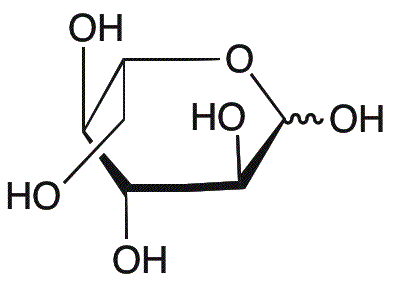L-(-)-Glucose is widely utilized in research focused on:
- Pharmaceutical Development: It serves as a key ingredient in drug formulations, enhancing the solubility and bioavailability of active compounds, which is crucial for effective medication delivery.
- Food Industry: Commonly used as a sweetener and a source of energy in various food products, it helps in improving taste while providing essential carbohydrates.
- Biotechnology: Acts as a carbon source in microbial fermentation processes, supporting the growth of microorganisms used in the production of enzymes, biofuels, and other bioproducts.
- Clinical Nutrition: Utilized in intravenous solutions for patients requiring nutritional support, ensuring they receive necessary carbohydrates for energy and recovery.
- Research and Development: Employed in laboratory settings for studying metabolic pathways and cellular processes, aiding researchers in understanding glucose metabolism and related diseases.
General Information
Properties
Safety and Regulations
Applications
L-(-)-Glucose is widely utilized in research focused on:
- Pharmaceutical Development: It serves as a key ingredient in drug formulations, enhancing the solubility and bioavailability of active compounds, which is crucial for effective medication delivery.
- Food Industry: Commonly used as a sweetener and a source of energy in various food products, it helps in improving taste while providing essential carbohydrates.
- Biotechnology: Acts as a carbon source in microbial fermentation processes, supporting the growth of microorganisms used in the production of enzymes, biofuels, and other bioproducts.
- Clinical Nutrition: Utilized in intravenous solutions for patients requiring nutritional support, ensuring they receive necessary carbohydrates for energy and recovery.
- Research and Development: Employed in laboratory settings for studying metabolic pathways and cellular processes, aiding researchers in understanding glucose metabolism and related diseases.
Documents
Safety Data Sheets (SDS)
The SDS provides comprehensive safety information on handling, storage, and disposal of the product.
Product Specification (PS)
The PS provides a comprehensive breakdown of the product’s properties, including chemical composition, physical state, purity, and storage requirements. It also details acceptable quality ranges and the product's intended applications.
Certificates of Analysis (COA)
Search for Certificates of Analysis (COA) by entering the products Lot Number. Lot and Batch Numbers can be found on a product’s label following the words ‘Lot’ or ‘Batch’.
*Catalog Number
*Lot Number
Certificates Of Origin (COO)
This COO confirms the country where the product was manufactured, and also details the materials and components used in it and whether it is derived from natural, synthetic, or other specific sources. This certificate may be required for customs, trade, and regulatory compliance.
*Catalog Number
*Lot Number
Safety Data Sheets (SDS)
The SDS provides comprehensive safety information on handling, storage, and disposal of the product.
DownloadProduct Specification (PS)
The PS provides a comprehensive breakdown of the product’s properties, including chemical composition, physical state, purity, and storage requirements. It also details acceptable quality ranges and the product's intended applications.
DownloadCertificates of Analysis (COA)
Search for Certificates of Analysis (COA) by entering the products Lot Number. Lot and Batch Numbers can be found on a product’s label following the words ‘Lot’ or ‘Batch’.
*Catalog Number
*Lot Number
Certificates Of Origin (COO)
This COO confirms the country where the product was manufactured, and also details the materials and components used in it and whether it is derived from natural, synthetic, or other specific sources. This certificate may be required for customs, trade, and regulatory compliance.


